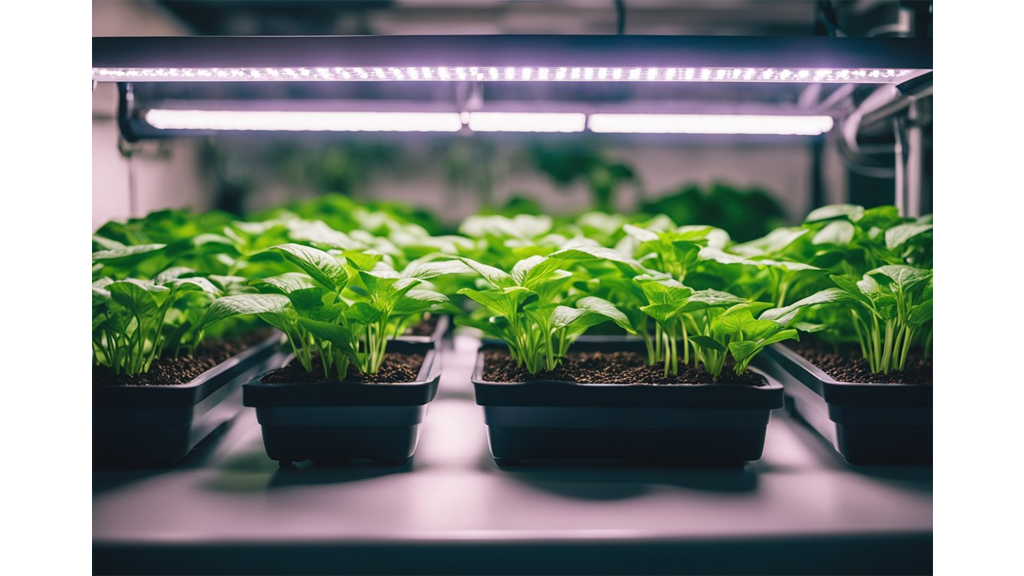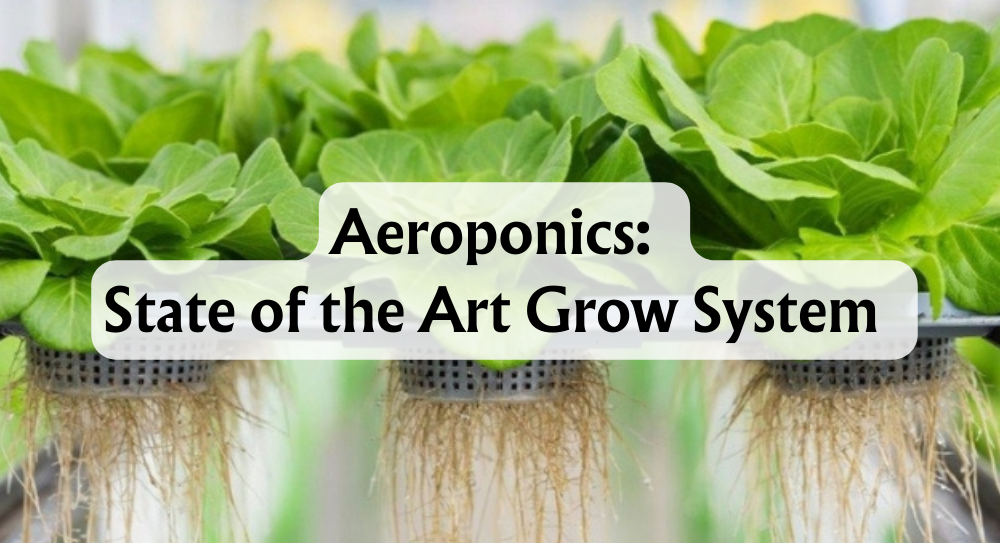How to Use a Hydroponic Grow Box
Stepping into the world of hydroponics can be a game-changer for gardeners like us who are keen to grow plants in limited space. What if I told you that achieving this garden revolution could be as simple as using a hydroponic grow box? These ingenious contraptions offer an elegant solution, allowing us to grow healthy plants without the traditional soil and related mess. So, how do we harness the power of a grow box for our green endeavours?
We plunge into the world of hydroponic gardening, a method that has gained massive popularity due to its efficient use of space and resources. It's a method that doesn't just work with your grow room; it offers a leg-up in fast-paced urban settings, where accessing a garden plot is as tricky as finding a needle in a haystack. Furthermore, a hydroponic grow box streamlines this process, providing a self-contained environment for our plants to thrive in, with all the necessary factors like lighting and nutrients meticulously controlled.
By the end of this article, you'll be equipped with the essentials to get started with your hydroponic grow box. I'll share my experiences and pointers on choosing, setting up, and getting the best out of your new gardening ally. Whether you're new to the grower game or looking to optimize your indoor grow, there's something here to cultivate anyone's interest.
Key Takeaways
- Hydroponic grow boxes support plant growth in confined or indoor spaces efficiently.
- These boxes create a controlled environment suitable for a variety of plants.
- You'll learn to select, install, and maintain your grow box for optimal results.
What Is a Hydroponic Grow Box?

So you want to start growing plants soil-free and with minimum space taken up? That's where a hydroponic grow box comes in. A hydroponic grow box is a tightly sealed, self-sustaining system that allows us to cultivate plants using water and nutrients without the traditional need for soil. It's like having a mini greenhouse that's been turbocharged with technology!
So, what sets these marvels apart? Hydroponic grow boxes are designed to be light-proof, waterproof, and odour-proof. They come with essential components to ensure your plants thrive:
- Built-in lighting: Ensures your plants receive the exact type and amount of light they need.
- Ventilation and filtration systems: These maintain a fresh environment by keeping the air moving and filtering out any odours.
- Reflective inner lining: Increases light efficiency by reflecting it back onto the plants.
Different hydroponic systems can be accommodated within these grow boxes, including:
- Water Culture
- Deep Water Culture
- Nutrient Film Technique
- Wick System
- Ebb and Flow
- Aeroponic System
Each system has its unique way of delivering water and nutrients right to the roots of your plants. And the systems are suited to different types of plants, so whether you're growing basil or bok choy, there's a system for you.
As for the boxes themselves, we've got options! From stealth grow boxes that fly under the radar to mini ones perfect for herbs, all the way up to large and multi-chamber boxes that can house a veritable jungle of foliage. Each one comes with a reservoir to hold water, a pump to move the nutrients and water, and a timer to ensure everything happens like clockwork. Plus, a growing medium that supports your plant's roots replaces the need for soil.
And don't worry about heat or smell – a fan, a filter, and a duct in the grow box take care of those, making the entire operation clean and hassle-free.
Where to Use a Hydroponic Grow Box?
Indoor Garden: Our living room, kitchen, or any sunny spot can turn into a green haven. A hydroponic grow box fits seamlessly into urban living, making it ideal for flats where traditional gardening isn't possible. We just need access to power for grow lights and a water supply to keep our plants thriving.
- Space Saving: These boxes are tailored for small spaces. Got an unused corner or a bare balcony? Why not transform it into a productive mini-farm? We can stack these systems vertically, making the most of vertical real estate.
- Controlled Environment: One big perk is the controlled environment they offer. This control means we can dial in the exact conditions our plants need, free from the unpredictability of British weather.
Cold Climate: Not to worry if the outside is more 'frosty the snowman' than 'flora and fauna.' Our grow box is the perfect solution for a cold climate, letting us farm fresh greens even in the dead of winter!
- Basement or Garage: These areas might go unused, but they're potentially excellent spots for a grow box. They're generally undisturbed, which is great for stability. Just keep in mind the humidity levels and ensure proper ventilation.
- Balcony or Closet: Short on space but rich in ambition? A compact grow box can slot right into a balcony or closet, giving us that lush feel without commandeering the entire area.
Now, a few tips to get started:
- Measure up! Make sure our chosen spot has enough space.
- Check for power and water sources. No good having a grow box we can't plug in or water.
- Level surface? Check. We want our plants to grow up, not sideways.
- Keep an eye out for pests. They love our greens as much as we do.
By picking the right spot and setting up our grow box with a bit of know-how, we'll have a green thumb in no time!
Choosing a Hydroponic Grow Box

When we venture into hydroponic gardening, selecting the right grow box is crucial for our success. This choice hinges on our budget, the space we can dedicate, and the type of system that best suits our plants. Let's break down the essential components.
Budget Considerations
We need to consider how much we're willing to invest. Hydroponic grow boxes range from the inexpensive Cash Crop model to more premium options like the SuperLocker. While pricier units might offer slick features like LED grow lights and carbon filtration, sometimes a basic model can still kickstart our hydroponic journey effectively. Look around for discounts, especially during off-peak seasons.
- Less expensive: Cash Crop
- Mid-range: SuperBox
- High-end: Superior SuperLocker
Size and Design
The size of the grow box is dictated by the space we can allocate and the number of plants we wish to grow. Remember, our plants will grow, so think upwards and outwards. A good start would be a compact grow tent if space is a concern. For a more concealed option, a stealth grow box could fit the bill. Ventilation is key, so make sure there's room for air circulation, and consider a grow box with a built-in carbon filter to neutralise odours.
- Small-scale: 1-2 plants – suitable for a Cash Crop box
- Medium-scale: Up to 4 plants – consider SuperBox for an efficient use of space
- Large-scale: Multiple plants – a Grobo unit or a customised grow tent might be required
Types of Grow Boxes
Hydroponic systems vary, so our choice of grow box should match the type of system we are interested in. Deep Water Culture (DWC) systems are great for beginners and often come with everything needed, including net pots and a growing medium like Rockwool. If we're more experienced, we might consider a grow box that can accommodate advanced techniques like Nutrient Film Technique (NFT).
- DWC: Look for a system with a sturdy frame to support water-weight
- Grow medium: Coir, clay pebbles, perlite, and coco coir are common; ensure the grow box can support your choice
- Lighting: Ensure there's support for grow lights, preferably LED for their energy efficiency
Choosing our hydroponic grow box involves assessing cost, space, and hydroponic preferences. By striking the right balance, we'll set ourselves up for verdant success. Let's research wisely, read user reviews, and keep an eye out for the best deals that give more growth for our pound.
Planting and Maintenance
When we start our hydroponic journey, it's all about getting those green fingers working. We're going to learn how to tuck our tiny seedlings into their new hydroponic home and keep them thriving with the perfect balance of nutrients, light, and love. Remember, the right start and consistent care can lead to lush yields!
Starting Your Seedlings
The adventure begins with the right seedling. We'll want to ensure our seedlings are robust before transplanting them into the net pots of our grow box. This is their cradle, so make sure it's snug! We typically use starter cubes that fit right into the pots. Let's not forget, efficient grow lights are vital for our seedlings' well-being. Keep them under lights for about 14-16 hours a day and you'll set them up for success.
Lighting for Seedlings:
- Duration: 14-16 hours per day
- Type: Fluorescent or LED grow lights recommended
Nutrient Solutions and pH Levels
Now, we'll mix things up like a DJ with our nutrient solutions. This is the food for our plants, so we mix it in water to create a nutrient-rich solution. A balanced pH is the heartbeat of our hydroponic system; keep it between 5.5 and 6.5 for most plants. Don't overlook this, as it can make or break our plants' ability to absorb those precious nutrients.
Nutrient & pH Checklist:
- pH Range: 5.5—6.5
- PPM: Check with TDS meter and adjust according to plant stage
Monitoring Plant Growth
Alright, it's game on! As we watch our plants grow, we keep a close eye like a hawk. Observe for fast growth and high yields, especially for our heroes—lettuce, basil, kale, and strawberries. Let's adjust temperature and carbon dioxide to encourage robust growth and monitor these closely using our trusty sensors.
Monitoring isn't just about watching; we need to be proactive, ensuring a constant flow of oxygenated, nutrient-rich water with our water pump and air stone.
Monitoring Checklist:
- Air Circulation: Keep it flowing; good air circulation aids in preventing pests and diseases.
- Temperature: Maintain around 18-22°C during vegetative stage.
- CO2 Levels: Higher levels assist in faster growth.
Using these steadfast guidelines, we can create a lush canopy of greens and veggies in our hydroponic grow box, enjoying herbs like mint and vegetables like tomatoes all in our cosy indoor garden. The beauty of hydroponics is in the harmony of elements—we give a little and get a lot, from tiny seedlings to bountiful harvests.
Optimising Your Hydroponic Grow Box

So, you've got yourself a hydroponic grow box, and you're eager to see a plethora of leafy greens blooming away? Let’s chat about how we can turbocharge your setup for a higher yield.
Setting the Stage with Grow Lights: How about ensuring your plants are sun-kissed even when indoors? Proper grow lights are your pals here. Aim for a lighting system that mimics natural sunlight. We're talking full-spectrum LED lights – they're energy-efficient and won't rack up a hefty electric bill.
- Daylight Hours: Keep the lights on for about 12-16 hours. More isn’t always merry here; plants need their beauty sleep too!
- Height Matters: Adjust the lights with hangers as your plants grow. Too close and they might get sunburned (yes, that's a thing), too far and they'll stretch into plant-y beanpoles.
The Drinks and Nosh – Water and Nutrients: Feeding our green friends is a delicate dance of pH levels and nutrients. Stick to a pH of 5.5 to 6.5 and keep the nutrient solution well-oxygenated. An oscillating fan can help with this – it's like a little wind of life for your plants, encouraging strong stems and preventing pesky diseases.
- Scheduled Sipping: Change the water every 2 weeks, and top it off when needed. Think of it as a mini spa day for your plant’s roots.
- Nutrient Know-How: Use a hydroponic-specific nutrient mix, and follow the instructions. It's a bit like a plant version of a gourmet meal kit!
Under the Hood – The Grow Box Itself: Does your grow box feel like home for your plants? Modify it if needed. Ensure it's leak-proof and that the reflective interior says "hello" to every little leaf by bouncing light back at them. It's all about creating the perfect snug environment for the flora family.
Concluding Thoughts
To wrap up, the benefits have been crystal clear: higher yields and less water usage. It's not just impressive; it's a game-changer for both seasoned green thumbs and aspiring gardeners alike.
- Higher Yield: Who doesn't love more bang for their buck? Our yield went through the roof, showing that a hydroponic set-up can make our veg look like they've been hitting the gym.
- Water Wise: It's remarkable how our grow box sips water compared to the guzzling habit of a traditional outdoor garden. We've saved water like we're saving for a holiday!
- Seasons, What Seasons?: No more waiting for the right season. Our indoor oasis bloomed regardless of snow or sun outside our window.
- Organic Glory: We've gone pesticide-free, and our plants are as organic as a hipster's market haul.
Remember, while the sun, soil, and breeze have their charm, you won't miss them with the results we've seen. And let's not forget, kissing soil stains goodbye is a hidden perk! Our grow box is not just a space-saver, but it's like a plant's personal spa.
If you're hesitant to leave your outdoor garden, let us reassure you: our experience showed that the transition can be smooth and highly rewarding. So, all in all, it seems we're onto a winner with our hydroponic grow box. A pat on the back for us, and an even bigger one for our incredibly productive leafy friends!







 Store Locator
Store Locator














